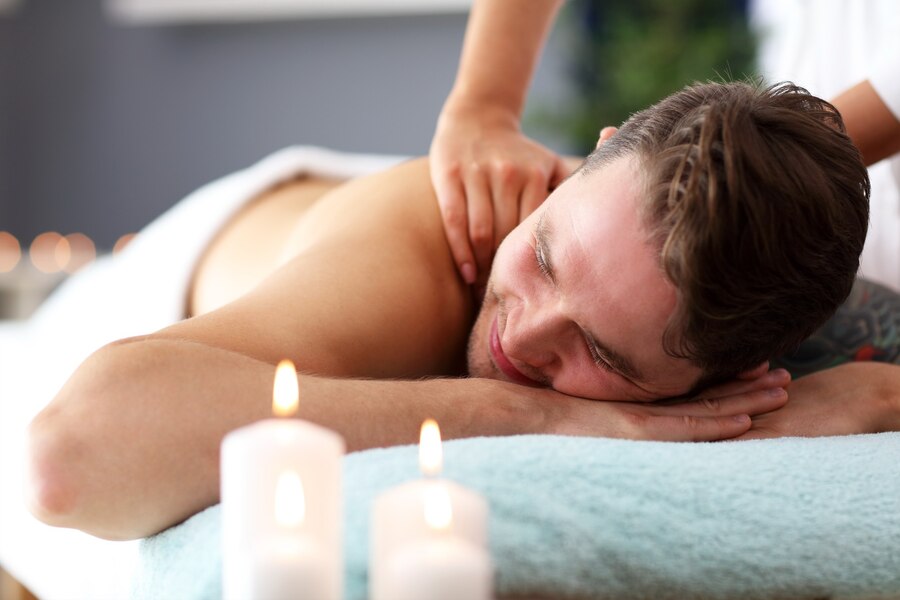Swedish massage is one of the most popular types of massage therapies around the world. Known for its gentle and relaxing techniques, it is often the first type of massage that people try. If you’re curious about Swedish massage and how it works, this guide is for you.
In this article, we’ll take a closer look at what Swedish massage is, its benefits, the techniques involved, and what you can expect during a session. Whether you’re looking for relief from stress, muscle tension, or simply want to treat yourself to a relaxing experience, Swedish massage can be the perfect choice.
What is Swedish Massage?
Swedish massage is a type of therapeutic massage that focuses on relaxing the entire body. It was developed in the early 19th century by a Swedish physiologist named Henrik Ling. The goal of Swedish massage is to increase blood circulation, ease muscle tension, and promote relaxation by using long, smooth strokes and gentle movements.
Unlike other types of massage that may focus on specific issues or muscle groups, Swedish massage is typically a full-body treatment that targets multiple areas to improve overall relaxation and well-being.
Swedish massage is often recommended for those new to massage therapy due to its gentle approach. It is also a great option for anyone looking to unwind, reduce stress, or relieve tension caused by daily activities, exercise, or poor posture.
How Does Swedish Massage Work?
Swedish massage works by using a variety of techniques designed to manipulate the body’s muscles and soft tissues. The massage therapist uses their hands, fingers, and sometimes forearms to apply pressure to the muscles and fascia (the connective tissue around the muscles). The goal is to increase blood flow to the area, relieve muscle stiffness, and promote relaxation.
During a Swedish massage session, the therapist will typically follow a routine, starting with the back, neck, and shoulders, and then moving on to the arms, legs, and other areas of the body. The therapist may adjust the pressure based on your preferences, either using light or deep strokes to target specific areas of tension.
Swedish Massage Techniques
Swedish massage involves five main techniques, each with its own purpose and benefit. These techniques are:
1. Effleurage (Long, Gliding Strokes)
Effleurage is the most common technique used in Swedish massage. It involves long, flowing strokes that are typically used to begin and end the session. Effleurage helps warm up the muscles, promote relaxation, and increase blood circulation. These gentle strokes can also be used to spread massage oils or lotions over the skin.
2. Petrissage (Kneading)
Petrissage involves kneading, rolling, and lifting the muscles to release tension and improve circulation. This technique helps to break down adhesions and muscle knots. Petrissage can also help relax the muscles by applying deeper pressure, which may feel more intense but is still intended to reduce tightness.
3. Friction (Circular Movements)
Friction is a technique where the therapist applies deeper pressure with their fingers, palms, or thumbs to stimulate the tissues and increase blood flow. It can be particularly effective for loosening stiff muscles and addressing problem areas like knots or tension in specific spots.
4. Tapotement (Rhythmic Tapping)
Tapotement involves quick, rhythmic tapping or percussive movements on the body, using the sides of the hands, fingertips, or cupped hands. This technique helps stimulate the muscles and increase blood flow. It can also be invigorating and energizing, making it a great way to finish off a Swedish massage session.
5. Vibration (Shaking Movements)
Vibration involves small, rapid shaking movements applied to the muscles. The therapist uses their hands to create a gentle, soothing vibration, which helps relax the muscles and improve circulation. It can be particularly helpful in areas that are tight or stiff.
Benefits of Swedish Massage
Swedish massage offers numerous benefits, both physical and emotional. Here are some of the main advantages of this popular therapy:
1. Relieves Stress and Tension
One of the most well-known benefits of Swedish massage is its ability to reduce stress and anxiety. The gentle strokes and soothing pressure promote relaxation and help to calm the nervous system. This makes Swedish massage a great option for people dealing with high levels of stress or those seeking to unwind after a busy day.
2. Improves Circulation
The long strokes and gentle pressure used in Swedish massage help improve blood flow to the muscles and tissues. Enhanced circulation can help oxygenate the body, nourish the cells, and promote overall health. Increased circulation also aids in the removal of toxins from the body, which can help reduce inflammation and improve the body’s natural healing process.
3. Reduces Muscle Tension
Swedish massage is effective at easing muscle tension and stiffness. The kneading and gliding movements help release tight muscles, making it an ideal treatment for people with muscle discomfort caused by physical activity, poor posture, or everyday stress. By addressing the underlying muscle tightness, Swedish massage can help improve flexibility and range of motion.
4. Promotes Better Sleep
Due to its relaxing effects on the body, Swedish massage can help improve the quality of your sleep. By reducing stress and calming the nervous system, Swedish massage promotes deeper and more restful sleep. This can be especially beneficial for individuals who struggle with insomnia or poor sleep quality.
5. Increases Flexibility and Range of Motion
Swedish massage can help improve flexibility by relaxing tight muscles and enhancing the range of motion in the joints. This can be particularly helpful for individuals with limited mobility due to tension, stiffness, or certain medical conditions. Improved flexibility can also reduce the risk of injury during physical activity.
6. Boosts Mental Clarity and Focus
Regular Swedish massage can help clear the mind and reduce mental fatigue. By promoting relaxation and reducing stress, it can help improve concentration, mental clarity, and focus. This makes Swedish massage an excellent treatment for those who need to recharge and improve their cognitive function.
7. Supports Lymphatic Drainage
The gentle strokes of Swedish massage also stimulate the lymphatic system, which plays a key role in detoxification and immune function. By encouraging lymphatic drainage, Swedish massage can help flush out toxins from the body, improving overall health and well-being.
What to Expect During a Swedish Massage Session
If you’re considering Swedish massage for the first time, it’s helpful to know what to expect during the session:
- Initial Consultation: Your therapist will likely ask you about your health history, any areas of tension or discomfort, and your preferences regarding pressure. This helps them tailor the massage to meet your needs.
- Comfortable Setting: You will typically lie on a comfortable massage table, where you will be draped with a sheet or towel. Only the area being worked on will be exposed at a time, maintaining your privacy and comfort.
- Massage Process: The therapist will begin with gentle strokes (effleurage) to warm up your muscles, then move on to techniques like kneading and friction. The pressure can be adjusted throughout the session to suit your preferences. Some areas may require deeper pressure, while others may benefit from lighter strokes.
- Relaxation: Swedish massage is designed to be relaxing, so you should expect to feel calm and at ease throughout the session. If the pressure feels too intense or not deep enough, don’t hesitate to communicate with the therapist.
- Aftercare: After the session, you may feel relaxed, rejuvenated, or slightly sore, especially if the massage focused on areas with built-up tension. Drink plenty of water to help flush out toxins, and consider stretching or resting to allow your body to fully absorb the benefits of the massage.
How Often Should You Get a Swedish Massage?
The frequency of Swedish massage depends on your individual needs and goals. If you’re seeking relaxation or relief from occasional stress, a monthly session may be sufficient. However, for individuals dealing with chronic muscle tension or specific discomfort, more frequent treatments (every 2-4 weeks) may be beneficial.
Conclusion
Swedish massage is an excellent choice for those looking to relax, reduce stress, and ease muscle tension. Whether you’re new to massage therapy or looking for a gentle and effective way to unwind, Swedish massage offers numerous physical and emotional benefits. From improved circulation to enhanced flexibility and better sleep, it can help you feel rejuvenated and more in tune with your body.
If you haven’t tried Swedish massage yet, consider booking a session with a licensed therapist to experience its soothing effects firsthand. With its calming techniques and numerous benefits, Swedish massage can be a wonderful addition to your wellness routine.


